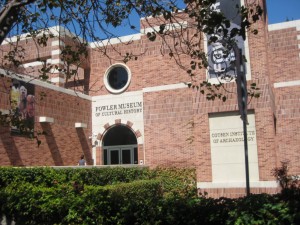
Many possible structures made from Carbon
Today our lecture talked about shape and function. It turns out that the shape of an object is equally as important, if not more so, than the materials that make up the object. For example, graphite and diamonds are chemically identical, and the only thing that is different between the two is the how the carbon atoms are put together. Everything has a specific function, and that function is based on its shape, whether it be a car, a house, a box, or a person. Sometimes, shape can even determine the color of an object, as is with the case of opals, which have crystals inside which reflect light of different wavelengths based on the angle at which the light is shone on the crystal faces.

After our lecture, we visited the Fowler Cultural Museum, the special collections library, and the Plasma Research Center. At the Fowler Cultural Museum, we were shown an exhibition on Australian Aboriginal art. The artists used simple shapes like lines and circles to represent real, complex objects in the natural world, such as people or watering holes. In the special collections library we saw many scientific books that played instrumental roles in history and had a special experience such as being on a space shuttle.

The Large Plasma Device in the Plasma Research Center was truly awesome and I enjoyed it despite the long walk. They study plasma, the fourth state of matter, there because it does not exist naturally on Earth. Plasma is heated to so high a temperature that all atomic bonds break apart and it is so unstable that it must be controlled using giant magnets that suck up massive amounts of energy.
http://ammin.geoscienceworld.org/cgi/content/abstract/93/11-12/1865
http://plasma.physics.ucla.edu/
http://www.iconsofthedesert.com/
http://cst-www.nrl.navy.mil/lattice/struk/carbon.html
http://www.plasmas.org/what-are-plasmas.htm